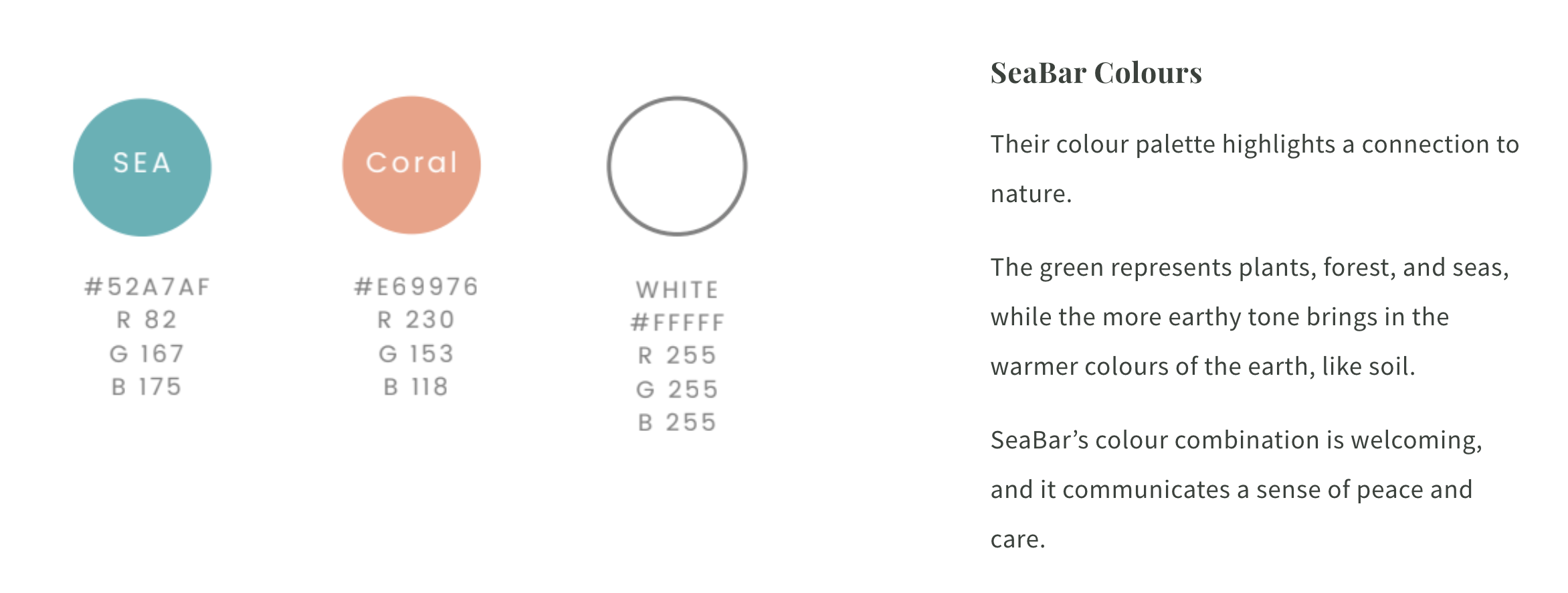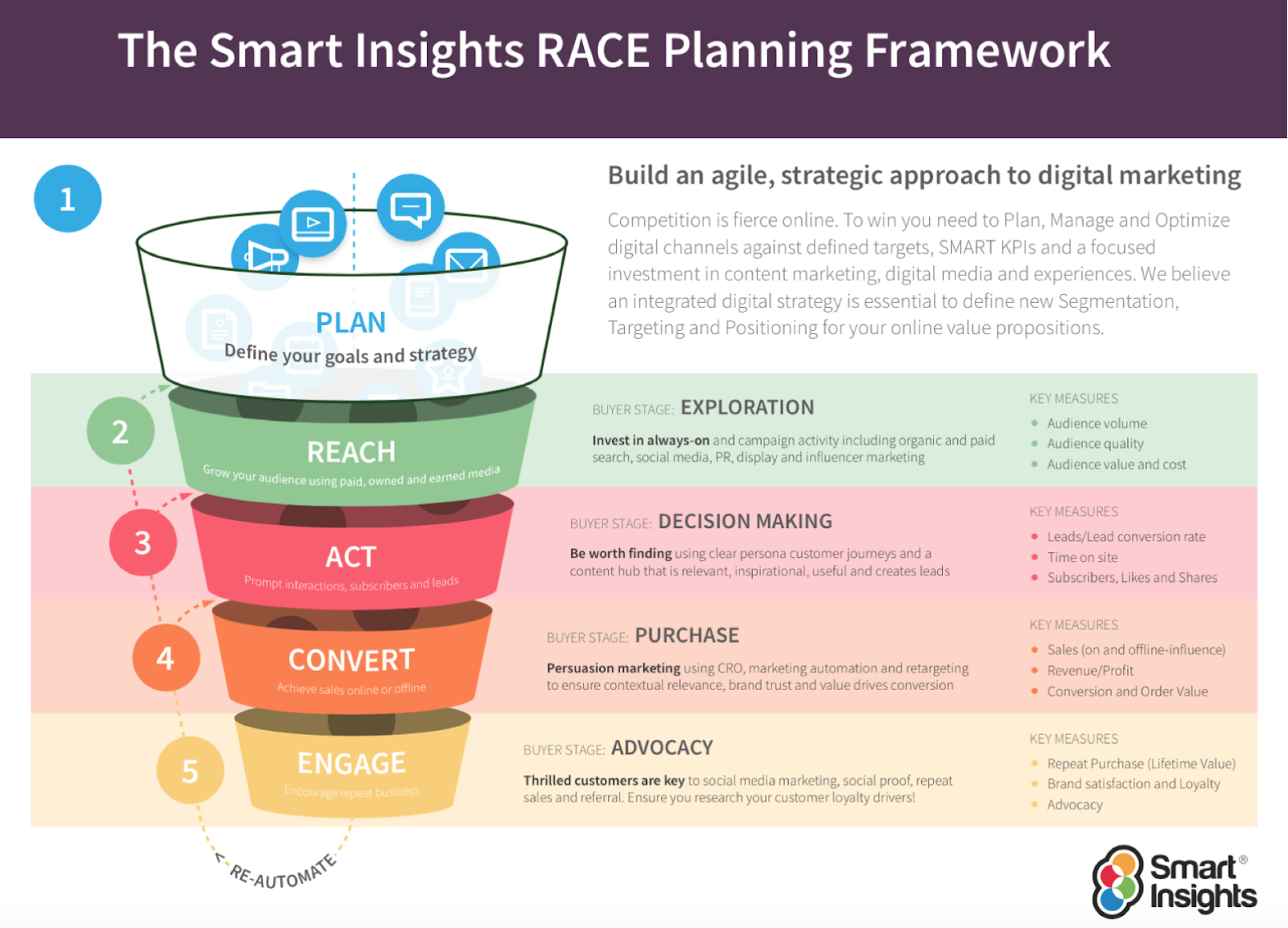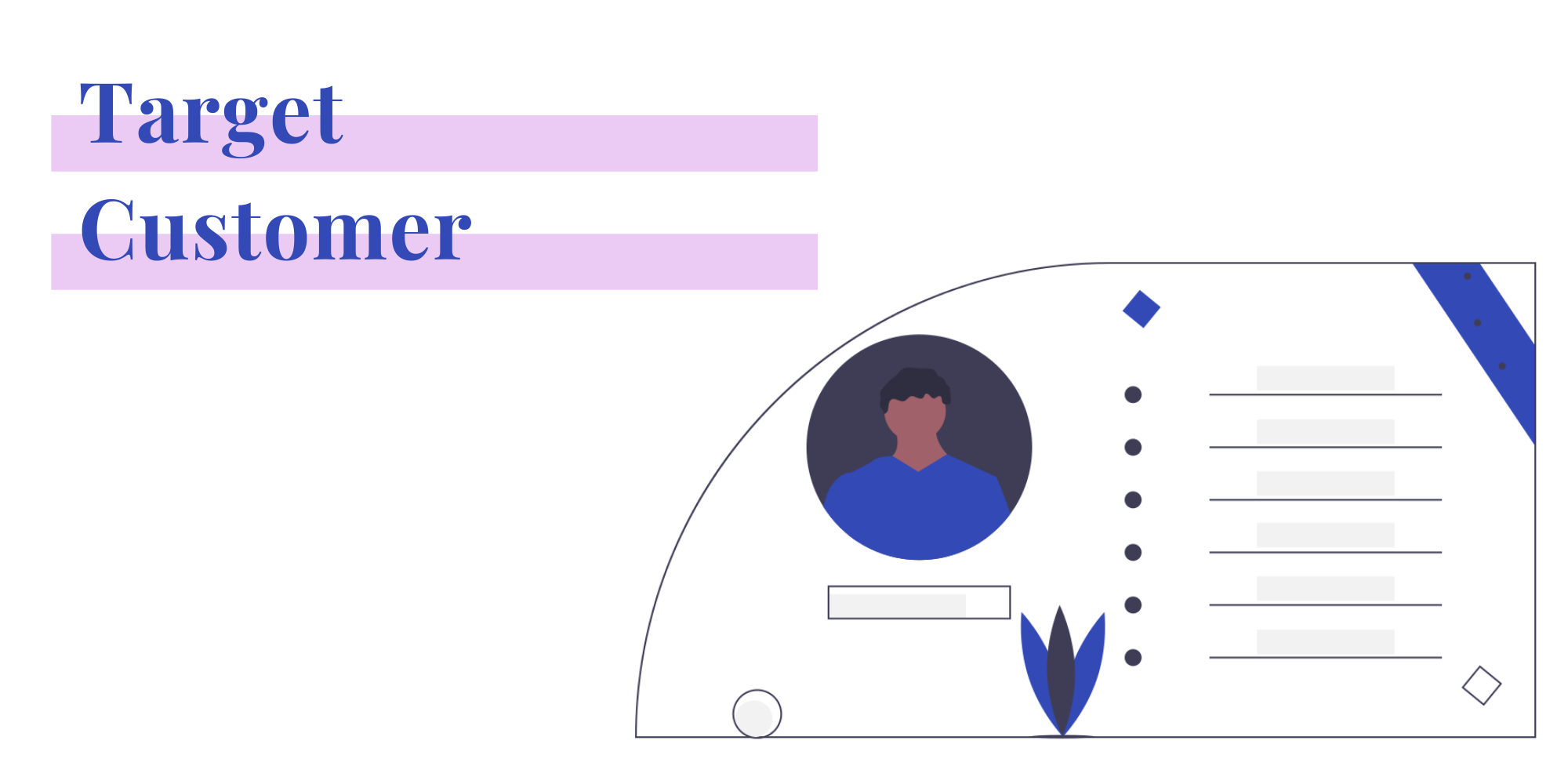How To Build A Brand Strategy
A Guide to Building a Brand Strategy
In this blog post, we will discuss how to build a brand strategy by sharing our brand strategy framework, digital marketing strategies and tactics.
By using our brand strategy framework, small businesses have the potential to scale online and capture their target customers’ attention.
Our world is currently going through a transformative era, whereby businesses are leveraging innovations and technologies to effectively reach and serve their customers.
The point of differentiation separating businesses that are competing for attention online is their branding and digital marketing strategies.
While there are many different tactics used to build a brand and market products or services online, the ultimate goal is always to create clear value for your audience.
How can you build an effective brand strategy that resonates with your target audience?
Here are some tips:
1. Start by defining your brand's core values and mission. This will provide the foundation for all of your branding decisions going forward, shaping everything from your website design to the messaging in your marketing campaigns.
2. Establish clear goals that are aligned with your company's vision and larger business plans. These goals will inform how you approach marketing activities such as social media outreach and search engine optimization (SEO).
3. Understand your target audience clearly. This means listening to and engaging with current customers, conducting market research, and leveraging data analytics tools to understand what content resonates with them.
4. Invest in quality design across all touchpoints. From your website, to your marketing graphics, to your packaging and other physical product design, make sure that your brand looks polished and professional at all times.
5. Be consistent in your messaging, both online and offline. This means creating a style guide that governs the tone and visuals used across all of your marketing materials, so that there is a clear continuity between them.
6. Don't be afraid to try new things, as this is an evolving landscape and there are always new trends emerging. Experiment with different social media platforms, marketing techniques, and messaging strategies to see what resonates best with your audience.
If you follow these tips and put in the time and effort needed to build a strong brand strategy for your startup, you will be well positioned to succeed in today's highly competitive online marketplace.
And best of all, you will be helping your customers by providing them with valuable products and services that truly add value to their lives.
Do you need help with your brand strategy and brand positioning?
We’re a Digital Marketing Agency in Vancouver, B.C. that specializes in marketing startups and small businesses.
From Content Marketing, Copywriting to full-on Creative Design–we can help!
We will reference some of our work with recent clients throughout the post, and if you are still wondering how to build a brand strategy.
Keep reading for our step by step brand strategy guide
Brand Strategy Framework
The first step that we will cover in how to build a brand strategy, which involves explaining our brand strategy framework.
In this framework, we have taken the core components involved in branding and digital marketing and incorporated them into a single model.
These include brand communications, relationship building, the marketing funnel, and the target customer.
Brand communications:
This relates to the delivery of your brand messages across different marketing channels, such as social media, email, paid advertising and search engine optimization (SEO).
Relationship building:
This involves interacting with customers on a one-on-one basis through content marketing strategies such as blogging, social media, email marketing and SEO.
Customer journey:
This is a visual representation of the customer’s experience with your brand throughout their entire lifecycle, from when they first learn about you to when they become a loyal customer and advocate for your brand. It also includes key decision points in the buying process, such as when they compare your brand to other brands, or decide which product to buy.
Target customer:
This is the audience that you are trying to appeal to with your offerings and content marketing strategies. Your target customer should be well-defined, down to their demographics (e.g., age, gender and location), as well as their interests and needs.
How to build a brand strategy in light of these components is by taking them into consideration when planning your marketing activities. For example, if you are blogging on a regular basis, it’s important that each blog post has an element of relationship building (e.g., providing tips that address the specific needs of your target customers, or asking them to provide feedback on the content).
Once you have your brand strategy in place, it’s important to continue to iterate on it by identifying opportunities for improvement and testing new marketing strategies.
In order to cater their messaging and visuals towards a specific audience, small businesses need a deep understanding of their target customers.
This includes understanding the following:
1. How they find out about brands and make decisions to buy products or services?
2. What information sources do they trust?
3. What language and tone resonates with them?
4. Their opinions on the current state of your brand, and what they would like to see improved?
5. Where they typically hang out online and offline, in order to be able to connect with them in these environments.
To gather this information, small businesses can use surveys, focus groups or one-on-one interviews. It’s important that the questions are relevant and not overly broad, so that you can gather actionable insights from the responses.
Once you have a deep understanding of your target customers and their needs, it’s then time to build out your brand strategy, including goals and key performance indicators (KPIs).
This should be aligned with your marketing activities so that all efforts are focused on achieving these goals, and ultimately growing your business.
The core components along the vertical axis of the model (i.e., brand communications and relationship building) are strategies that are central to branding.
The core components along the horizontal axis of the model (i.e., the marketing funnel and target customer) involve more specific marketing strategies and tactics to reach a niche audience online, sell a product or service to that audience, and facilitate organic growth.
In the following sections, we will discuss each component further and go into the more specific digital marketing strategies and tactics associated with each.
As a creative marketing and branding agency, we can help you with any of these components during your business journey.
Brand Communication Strategy
Various elements of brand communications should be considered to develop a consistent and cohesive brand that is memorable and meaningful to customers.
These elements are often developed by the design team, including the brand voice, storytelling, colours, and logo.
As a Vancouver marketing agency focused on helping startups and small businesses, we stress the importance of brand communication.
Brand communications are often the best place to start for businesses that are wondering how to build a brand strategy, as these elements will determine how the brand looks and feels.
Brand Voice
The brand voice is a crucial component in brand communications.
Sprout Social defines the brand voice as a personality–encompassing the conversational flow and specific language used.
Ensuring that the brand voice remains consistent and cohesive, a specific tone should be identified and utilized. Regular audits should be performed while considering how the audience is responding to certain types of messages.
Brand Storytelling
Across the world, social media is becoming the primary form of entertainment for consumers. This allows businesses an avenue to reach a wide audience of potential customers, but it also poses challenges.
To stand out from the competition, brands need to develop strategies that incorporate storytelling into brand communications.
The elements of storytelling that can be used as brand strategies include character and plot development, themes, conflict, and so on.
Brand Colours
Colours are one of the most important decisions that the design or branding team will make. Colours affect our moods and emotions, thus, directly impacting the feel of the brand.
To positively influence brand perceptions, colours that evoke emotions, that are in alignment with the brand voice and personality, should be chosen.
For example, certain tones of blue will convey calmness and relaxation and are thereby often used by health and wellness or travel brands.
To understand how these design decisions are applied, you can check out our recent work with the brand SeaBar.
We’re a Digital Marketing Agency in Vancouver, B.C. that specializes in marketing startups and small businesses.
Book a call for a quote on our branding and marketing services.
The colours we chose for SeaBar utilizes earthy and warm tones connected to nature.
The colours also emulate the brand vision.


Logo Design
The logo is another critical point of discussion for the design team.
Components like the symbols, fonts, and colours should be considered, as well as more complex factors that impact prices, and the transferability of the logo onto branded items/content.
As a general rule of thumb, the logo should convey the look and feel of the brand.
If we look to some of the world’s most successful brands like Nike and Apple, we see this simplicity paying dividends.
Relationship Building
When businesses consider how to build a brand strategy, one of the core components involves relationship building.
The digital marketing strategies that we will cover within this section include email, customer services, social CRM, and mobile marketing.
Email Marketing
Collecting emails is one of the most valuable digital marketing strategies at an online brands’ disposal.
In marketing, there are three forms of media: earned media, owned media, and paid media. The most valuable is owned media. Email falls into the owned media category. This is an audience that the brand now owns and can tailor messages accordingly.
When brands use social media and other platforms to build their audience, they are under the authority of the given platform. Conversely, when email addresses are collected, the brand no longer relies on the platform to access its target audience.
Customer Service
One of the most important components of brand strategy and relationship-building efforts involves conducting high-quality customer services.
In digital marketing, it can become difficult to ensure that customers receive the highest level of service.
In a post by Convince & Convert, the company Zappos is used as an exemplar brand that is effectively implementing customer services into their online brand strategy. Zappos offers online shoppers 365-day money back guarantee and free shipping both ways.
This creates organic growth online as shoppers write testimonials on the brand’s website and social media platforms about their great experiences.
This is one example of the many customer service strategies that can be utilized for online brands.
Social CRM
To build long-term customer relationships, another tactic that should be incorporated into the brand strategy is social customer relationship management (CRM).
To successfully engage with customers online, businesses should continually monitor their chosen social media platforms.
It is good practice to respond to positive and negative comments on posts as quickly as possible (within 24 hours at the most).
This action will ensure that customers who have a positive experience will continue to interact with the brand online, and the negative experiences will be resolved and handled appropriately so that the relationship is not tarnished.
Social media is an avenue that brands can use to build relationships. While it is impossible to please everyone online, brands should conduct themselves to emulate their mission and values.
Mobile Marketing
Mobile marketing strategies are any relationship-building strategies that involve the use of a smartphone or tablet.
These may include anything from the use of loyalty programs that are facilitated by apps to SMS marketing (i.e. marketing via text).
As the prevalence of smartphones and tablets rises, the need to reach and build relationships with consumers on these devices rises, too.
Marketing Funnel
There are different variations of the marketing funnel within the marketing world. In short, it is a visual diagram used to describe and plan out the process of converting a consumer into a loyal customer.
Planning Framework
Smart Insights offers a great marketing funnel diagram, in which the buyer stages and corresponding key measures are provided.
We have provided digital marketing strategies that can be used for each of the buyer stages that will help to answer the question of "how to build a brand strategy?"
SEO & PPC
After the planning phase is complete (where goals and strategies are identified), the step and first buyer stage involve reach. This is where a brand is looking to grow online by making the brand well-known to the target audience.
To do this, brands should consider investing in SEO and PPC strategies. By ensuring that their website ranks highly on Google and utilizing ads that directly target the ideal buyer, the brand will reach a wide audience and improve overall brand awareness in the early phases.
Google Analytics
The next stage in the marketing funnel is action. This is where the buyer is faced with a buying decision, and the brand encourages the consumer to act favourably.
One of the digital marketing strategies that brands can and should use at this stage is Google Analytics. Tracking consumer behaviour leads to brands developing a better understanding of the types of searches that are being made. They can also see how long people are spending on the website and analyze other relevant key insights that will aid in more favourable interactions with consumers.
AB Testing & Optimization
After the action stage comes conversion. By this point, the consumer will have made a favourable buying decision, and all that’s left is the actual purchase of the product or service.
To optimize the order volume and checkout procedure online, brands should consider AB testing as one of their digital marketing strategies. AB testing can be used in various applications, such as Facebook Advertising and websites, to determine the key factors that consumers positively respond to that lead to a purchase.
Content Marketing
The final buyer stage in the marketing funnel is engagement, whereby the customer becomes a loyal advocate for the brand.
One of the marketing strategies that can aid in this behaviour is content marketing. Consumers are more likely to interact with brands online if their content is high quality, authentic, and useful/valuable. Good content marketing can go a long way in building a brand community online and facilitating a cyclical marketing funnel (i.e., the advocate influences the next potential customer).
Target Customer
The last component of our brand strategy framework that helps to answer the question “how to build a brand strategy” involves strategies that can be used for defining and reaching the target customer.
These marketing strategies include developing a strong value proposition, detailed buyer persona, firm positioning statement, and the overall vision, mission, and values of the brand. Each of these will be discussed further.
Value Proposition
The value proposition is a statement that is made from the buyers’ perspective, which highlights the key points of differentiation and value of the brand.
For example, Warby Parker’s value proposition is “fashionable, quality glasses at an affordable price.”
Another example comes from one of our most recent projects with the client Saint Perry. Saint Perry is an online fashion brand with a unique style.
The value proposition that we’ve curated is “a fashion brand that helps you express your unique personality and style.” We helped them curate their brand identity.
By indicating the core selling points, the brand can better understand the key deliverables that the customer expects, and they can prioritize their digital marketing strategies and messages accordingly.
Buyer Persona
The buyer persona is one of the fundamental components in defining the target customer and building a brand strategy. This involves defining the ideal buyer based on geographic, demographic, psychographic, and behavioural segmentation variables.
For more details on the buyer persona, you can visit our Brand Persona Template. You can also learn more about our services, from creative web development to brand positioning and much more via those links. Feel free to book a 15-minute call for all your branding and marketing needs as well!
Brand Positioning and purpose statement
The positioning statement is often used in accordance with the competitive analysis and positioning map. It is a statement that indicates the specific place that your brand will occupy within the market.
It is important to conduct a competitive analysis and to create a positioning statement, as it will help to develop a better understanding of your brand’s target customer and how it is different or the same as competitors within the industry. This knowledge will aid in determining the specific marketing strategies and messages to implement.
Vision, Mission & Values
The vision and mission statement, as well as the brand values, are also central to the target customer. By identifying who your brand is and what you stand for, you can ensure alignment with the buyer persona and the other strategies that have been listed.
How To Build A Brand Strategy
In this post, we have discussed our brand strategy framework that can be used to answer the question “how to build a brand strategy.”
The core components of our brand strategy framework include brand communications, relationship building, the marketing funnel, and the target customer.
By using the digital marketing strategies and tactics that are associated with each of the core components, small businesses can build a brand strategy and scale quickly and efficiently online.
If you are still wondering how to build a brand strategy for your business, you can check out some of our related blog posts like Marketing Strategies for Startups and Brand Voice Guidelines.
If you need help writing a business plan for your startup, checkout our guide here https://www.brandedagency.com/blog/writing-a-business-plan-guide
Book a 15-minute call with The Branded Agency to get your creative brand building going. Our affordable branding and marketing services will surely help your small business scale!
Here are some very specific step by step branding guides for: Real Estate, Lawyers, Accounting, Doctors, Dentists, Optometrists, Jewellery, Makeup & Beauty, Skincare, Pet Food, Fashion and Construction.
*Pin It*
Don’t forget to *pin this* if you’ve found this guide on brand strategy helpful!
Feel free to check out our other blog posts here for more valuable information to scale your business.











